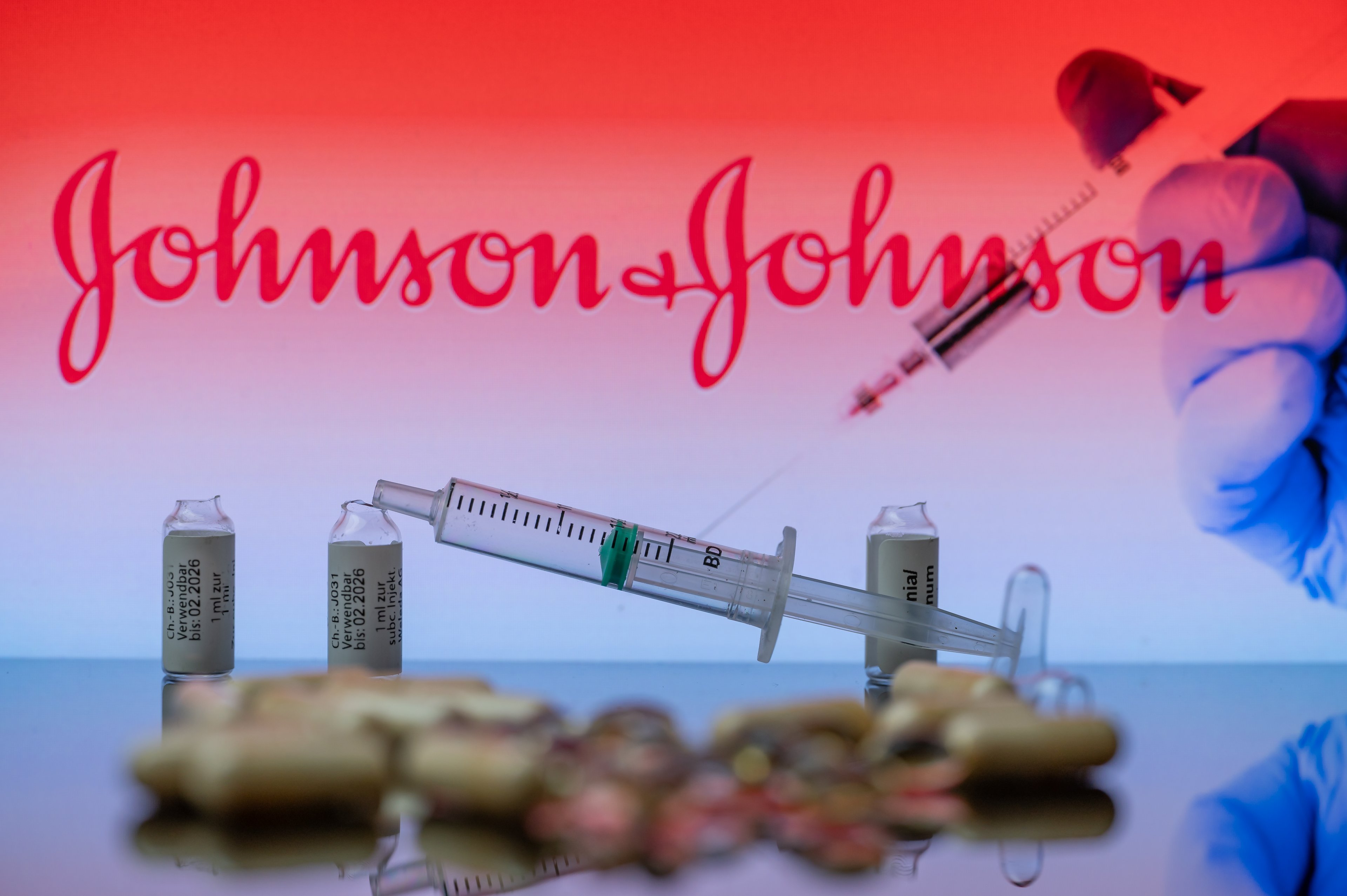Johnson & Johnson (JNJ +1.94%) recently reported that its revenue soared 12.6% to $20 billion in the first quarter. However, that revenue growth rate comes with an asterisk.
In this clip from The Motley Fool's Industry Focus: Healthcare, analyst Kristine Harjes is joined by Todd Campbell to explain. Plus, the two highlight J&J's top drugs and how the company is navigating one very big headwind.
A full transcript follows the video.
This video was recorded on April 18, 2018.
Kristine Harjes: Todd, we have time for one more news item. What do you want to talk about?
Todd Campbell: I thought it would be important for investors to understand a little bit about what happened with Johnson & Johnson in the first quarter. They just reported their first quarter earnings results, so I feel like that's probably a great topic for you and I, to give people an overview of what's going on with J&J, because it's a core holding probably in most of our listeners' portfolios.
Harjes: This could not be a harder pivot from Celldex, [laughs] tiny little biotech that essentially only has one pipeline candidate. Johnson & Johnson is enormous. It's a pillar of our ongoing coverage of the healthcare sector, so I'm glad that you want to talk about it. You're right that so many investors own it, especially dividend investors. They're part of so many index funds, as well, that chances are, nearly all of our listeners have some sort of stake in J&J.
Campbell: Right. Even if you don't know you own it, you own it.
Harjes: Yeah. So, what are the headline figures?
Campbell: To give a little bit of context, let's take a look at Q1's numbers and compare them a little bit to what happened in Q4, so you get a little bit of sequential feel. In the first quarter, revenue clocked in at $20 billion. Now, that was up 12.6% on an adjusted basis. In Q4, revenue was $20.2 billion. So, you saw a nice little pop year over year, but flat quarter over quarter. As far as earnings per share, those came in at $2.06. This is adjusted numbers. Again, up 12.6%. That was up nicely from $1.74 in the fourth quarter.
There is, though, a caveat, and I think we highlighted this the last time J&J reported their earnings as well, to taking a look at the top line revenue numbers. Kristine, as you'll remember, Johnson & Johnson made that big splash when they bought Actelion. So, you have the positive impact of the sales that have come from Actelion in that 12.6% growth.
Harjes: Yeah, that was a game changer. That was a $30 billion acquisition, so of course we're now seeing the effects of it.
Campbell: Right. If you back out that deal to try to get a feel for how, operationally, J&J is doing, you get a much more, we'll call it realistic growth figure for an $80 billion company. You usually don't see $80 billion companies growing double digits, right? So, the overall sales if you back out Actelion and adjust for currency conversion and all that jazz, was up 4.3%. So, let's call that solid, Kristine. Right? 4.3% for a company of this size?
Harjes: I'll take it.
Campbell: Great. Why not, right? So, you and I have talked about on the show before, that J&J breaks out their business into three different segments.
Harjes: Yeah. They have the medical devices segment, they have the consumer products segment, and then they have the pharma segment. So, I'm sure you'll tell me a little bit about the first two, but I'd really love to focus on the pharmaceutical segment, because as usual, that's the one that really matters and really drives the growth.
Campbell: Yeah, that's where the rubber hits the road for this company, and it does for most biopharma companies. The consumer business is a steady-eddy business. As a matter of fact, in the first quarter, the sales were up 1.3% year over year. Big deal, right? Medical device business, that was only up to 3.2% year over year. It's really that pharmaceuticals business that was the big driver for J&J's results in the quarter. Sales there for the pharma segment grew 15.1%. And even if you X-out Actelion, growth was still up 7.5%. For a company of this size, that's pretty solid growth.
Harjes: Yeah. That also speaks good things about the Actelion acquisition, that it accounted for about half of their pharmaceutical growth.
Campbell: Very good point. It was a big deal. But, it wasn't the only thing that was in the pro column for the pharma segment. I think investors should be aware that Stelara, which won approval for Crohn's disease back in 2016, continues to get more and more market share, and as a result, its sales jumped 24% year over year to over $1 billion, so that's now a $4 billion a year drug. Darzalex, which recently won approval for use in the second line of multiple myeloma treatment, sales there soared. They jumped 64% to $432 million. So, that's now a $1.6 billion a year drug and still climbing, and with potential to go even higher, because they're hoping to win approval for first line use of Darzalex. That's, of course, a very big indication, so there's a lot of opportunity there. They also saw really good growth for Zytiga, their prostate cancer drug, that grew 54% because of, again, a label expansion. And, Imbruvica, which they share with AbbVie, sales of that drug, which is used in CLL, jumped 35% to nearly $600 million. So, they had a number of different bright spots in the pharmaceutical product lineup.
Harjes: Yeah, especially in oncology, which was up 37%. But, turning to the cons column, we've been watching Remicade for a while, and some price erosion there has caused an 18% drop. What's going on with Remicade?
Campbell: Listeners might remember, Kristine, you and I have talked about this on the show in the past, Remicade, one of the largest, top-selling drugs for use in autoimmune disorders, that lost its patent protection. Pfizer and a couple of other companies have come out and are challenging it with their biosimilars. Johnson & Johnson, there's a little controversy there in how they're going about doing this, but they've been very aggressive about maintaining their market share in terms of volume, and they've done that by being aggressively negotiating deals with the insurers that give them preferential treatment. They're cutting costs, they're cutting the cost of Remicade to maintain their volume. And that's really the reason behind the 18% year over year drop in Remicade's sales to $1.4 billion. And I think, from a business standpoint, that's probably the right move, that's a smart move, because they can still make plenty of money on Remicade even by cutting its prices. These are expensive drugs.
Harjes: Yeah, it's a necessary evil.
Campbell: Yeah. And they also have Concerta that's facing off against some generic competition, so sales of that fell 20% to $173 million. Invokana, which is a type II diabetes drug, an SGLT2 drug, sales of that fell about 14% to $248 million, just because other drugs with the same mechanism of action have come to market in the past year, so the money is getting spread out across more players.
Nothing really here very concerning to me. We should probably factor in that Remicade sales will continue to trickle lower over time, but this certainly isn't the 50% drop off you might expect when generics come to market. It seems to be more of a controlled decline. And if you have a controlled decline, then new drugs can come to market and offset some of that headwind.
Harjes: And they do have some new drugs. They have a new prostate cancer drug, they also have a new psoriasis drug that showed superiority to Humira, which is one of the best-selling drugs ever, in a head-to-head analysis. So, there are definitely good things coming up in the future for Johnson & Johnson.
Campbell: Right. You mentioned those two drugs. You have Tremfya, which is, again, that drug that outpaced Humira, and Humira is obviously the best-selling drug in the world with over $18 billion in sales, so any time you can best that drug, right, [laughs] it's a good thing for commercial revenue. Then, you also have your new prostate cancer drug, and remember, prostate cancer is a massive indication, they get $3.6 billion a year just from their prostate cancer drug Zytiga. I don't know if this will be a blockbuster, too, but I think we'll be watching that over the course of the next couple of quarters because it could add meaningful revenue. As far as 2018, they did issue guidance, Kristine. Do you want me to outline what that guidance is?
Harjes: Absolutely, tie a bow on it.
Campbell: Alright. In 2018, the company is now expecting between $79.5-80.3 billion in revenue. And if they can deliver on that number, that's going to be up 4-5% on an operational basis. That's slightly better than the revenue expectation they had exiting Q4, when they were expecting $79.1-79.9 billion. So, on the top end, they increased their outlook by about $400 million. They left their EPS guidance unchanged, though, somewhere between $7.80-8.00 a share.






